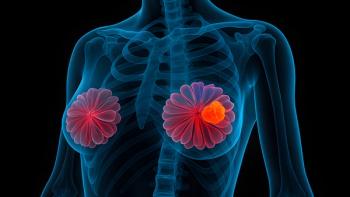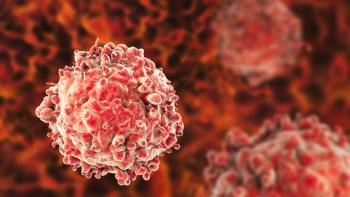
Dexamethasone Plus Physical Activity May Reduce Cancer-Related Fatigue
Combining aerobic and resistance-based physical activity with dexamethasone may improve quality of life and reduce the effects of fatigue.
A combination of physical activity and dexamethasone showed clinically significant improvements in cancer-related fatigue and quality of life for patients with advanced cancer, as demonstrated by a recent study.
“We observed a sustained improvement in [cancer-related fatigue] and fatigue-related outcomes for up to 3 weeks compared with baseline after discontinuation of [dexamethasone], suggesting that possible priming effects of [dexamethasone] helped sustain [physical activity],” reported researchers at The University of Texas MD Anderson Cancer Center in Houston, which was responsible for the study (NCT03583255).1 Of note, the study was published in the Journal of the National Comprehensive Cancer Network.
Patients in the study had advanced cancer and a cancer-related fatigue score of 4 or higher according to the Edmonton Symptom Assessment Scale (ESAS) for fatigue, which grades on a scale from 0 to 10. Patients were given a standardized regimen of aerobic and resistance-based physical activity to follow for 28 days. In addition, patients were randomized to 4 mg of dexamethasone or placebo for the first 7 days of the physical activity schedule. Participants were evaluated for indicators of cancer-related fatigue from baseline to on days 8 and 29, one day after ending medication and physical activity programs, respectively. Fatigue scores significantly improved in the dexamethasone group. Patients saw a median improvement in Functional Assessment of Chronic Illness Therapy-Fatigue (FACIT-F) scores of 9 (range, 2-16; P < .001) on day 8 and 5.75 (range, 0-12.5; P = .015) on day 29, with effect sizes of -3.49 and -2.43, respectively. Patients assigned placebo experienced median changes in these scores of 3.5 (range, -2.1 to 10; P = .054) at day 8 and 6.5 (range, 2.5-15.5; P = .006) by day 29.
In all other metrics for cancer-related fatigue, only the patients who received dexamethasone experienced significant results and did so on days 8 and 29.
From baseline to day 8, patients assigned physical activity and dexamethasone had the following median changes in scores: -2 (IQR, -3 to 0; P = .001) for the Edmonton Symptom Assessment Scale (ESAS Fatigue); -7.9 (IQR, -12 to 0; P = .003) for the Patient Reported Outcomes Measurement Information System-Fatigue Short Form 7a (PROMIS-Fatigue SF-7a), and -8 (IQR, -16 to 1; P = .023) for Multidimensional Fatigue Symptom Inventory-Short Form (MFSI-SF) scores. In comparison, the median change scores from baseline to day 8 in the placebo group were 0 (IQR, -2 to 1; P = .23) for ESAS Fatigue, -1.4 (IQR, -8.3 to 4.2; P = .09) for PROMIS-Fatigue SF-7a, and -3.5 (IQR, -9 to 3; P = .26) for MFSI-SF total.
From baseline to day 29, the median change score for patients assigned dexamethasone was -1 (IQR, -2 to 0; P = .015) for ESAS Fatigue, -5.45 (IQR, -8.8 to 0; P = .005) for PROMIS-Fatigue SF-7a, and -11 (IQR, -21 to 4; P = .007) for MFSI-SF total. For the placebo arm, the median change scores were 0 (IQR, -4 to 1; P = .07) for ESAS Fatigue, -4.25 (IQR, -9.8 to 1.7; P = .14) for PROMIS-Fatigue SF-7a, and -7.5 (IQR, -16 to 3; P = .094) for MFSI-SF total.
Quality of life, as measured by FACT-G, increased in both groups, but improvements were statistically significant for those whose physical activity were paired with dexamethasone.
Those whose took dexamethasone experienced a median improvement in FACT-G scores from intake of 5.5 (IQR, -0.8 to 12; P = .017) on day 8 and a median improvement of 6.97 (IQR, 3-10.5; P = .001) on day 29, compared with the placebo group’s median improvement of 2.17 (IQR, -3.83 to 10; P = .14) on day 8 and 3.09 (IQR, -3.75 to 10; P = .094) on day 29.
FACT-G physical wellbeing (PWB) scores improved significantly for patients in the dexamethasone group on both days 8 and 29, with median improvements of 3 (IQR, 0-5; P = .001) and 2 (IQR, 1-4; P = .002), respectively. Scores for those in the placebo group also significantly improved on day 8, with a median improvement of 2 (IQR, -1 to 3; P = .049), although there was no change at day 29 (IQR, -1 to 3; P = .15).
“These results may suggest a possible impact of combination [physical activity and dexamethasone] more on the peripheral rather than the central causes, such as reduction of inflammatory components of [cancer-related fatigue],” the study authors wrote. “However, more research is necessary.”
A total of 13 serious adverse events (AEs) occurred during the study, with 6 occurring in the dexamethasone group and 7 in the placebo group. No significant difference in rates of serious AEs was observed between the two patient groups (P = .36). One AE—a case of grade 3 insomnia—was possibly related to physical activity plus dexamethasone.
Researchers analyzed the effects of this regimen in 64 patients. The adherence rates for the dexamethasone and placebo groups were 91% and 92%, respectively for study medication (P = .15), 83% and 70.6% for resistance exercise (P = .35), and 82.9% and 78.3% for aerobic exercise (P = .73).
High rates of satisfaction, as assessed by a 5-point scale, were associated with both groups. The dexamethasone arm reported a 98% satisfaction rate, and the placebo arm reported a 79% satisfaction rate.
Reference
Yennurajalingam S, Valero V, Smalgo BG, et al. Physical Activity and Dexamethasone for Cancer-Related Fatigue: A Preliminary Placebo-Controlled, Randomized, Double-Blind Trial. J Natl Compr Canc Netw. Published online January 7, 2025. doi:10.6004/jnccn.2024.7071
Newsletter
Knowledge is power. Don’t miss the most recent breakthroughs in cancer care.
















































































